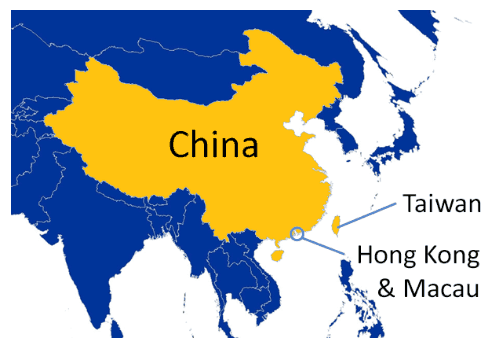IASbaba Daily Prelims Quiz
UPSC Quiz – 2020: IAS Daily Current Affairs Quiz Day 161
Archives
Important Note
- Don’t forget to post your marks in the comment section. Also, let us know if you enjoyed today’s test 🙂
Test-summary
0 of 5 questions completed
Questions:
- 1
- 2
- 3
- 4
- 5
Information
To view Solutions, follow these instructions:
- Click on – ‘Start Test’ button
- Solve Questions
- Click on ‘Test Summary’ button
- Click on ‘Finish Test’ button
- Now click on ‘View Questions’ button – here you will see solutions and links.
You have already completed the test before. Hence you can not start it again.
Test is loading...
You must sign in or sign up to start the test.
You have to finish following test, to start this test:
Results
0 of 5 questions answered correctly
Your time:
Time has elapsed
You have scored 0 points out of 0 points, (0)
| Average score |
|
| Your score |
|
Categories
- Not categorized 0%
| Pos. | Name | Entered on | Points | Result |
|---|---|---|---|---|
| Table is loading | ||||
| No data available | ||||
- 1
- 2
- 3
- 4
- 5
- Answered
- Review
-
Question 1 of 5
1. Question
Consider the following statements with respect to ‘Jhum cultivation’
- It is the process of growing crops by first clearing the land of trees and vegetation and burning them thereafter.
- IT is particularly practiced in the northeastern States of India.
Select the correct statements
Correct
Solution (c)
Jhum cultivation, also known as the slash and burn agriculture, is the process of growing crops by first clearing the land of trees and vegetation and burning them thereafter. The burnt soil contains potash which increases the nutrient content of the soil.Tribal groups in the northeastern Indian states of Arunachal Pradesh, Meghalaya, Mizoram and Nagaland and the Bangladeshi districts of Rangamati, Khagrachari, Bandarban and Sylhet refer to slash-and-burn agriculture as jhum or jhoom cultivation.
Incorrect
Solution (c)
Jhum cultivation, also known as the slash and burn agriculture, is the process of growing crops by first clearing the land of trees and vegetation and burning them thereafter. The burnt soil contains potash which increases the nutrient content of the soil.Tribal groups in the northeastern Indian states of Arunachal Pradesh, Meghalaya, Mizoram and Nagaland and the Bangladeshi districts of Rangamati, Khagrachari, Bandarban and Sylhet refer to slash-and-burn agriculture as jhum or jhoom cultivation.
-
Question 2 of 5
2. Question
‘Katchchativu island’ is administered by
Correct
Solution (a)
It is an uninhabited island administered by Sri Lanka and was a disputed territory claimed by India until 1976. The island is located between Neduntheevu, Sri Lanka and Rameswaram, India and has been traditionally used by both Sri Lankan Tamil and Tamil Nadu fishermen. In 1974 India recognized Sri Lankan ownership of the island on a conditional agreement.
Incorrect
Solution (a)
It is an uninhabited island administered by Sri Lanka and was a disputed territory claimed by India until 1976. The island is located between Neduntheevu, Sri Lanka and Rameswaram, India and has been traditionally used by both Sri Lankan Tamil and Tamil Nadu fishermen. In 1974 India recognized Sri Lankan ownership of the island on a conditional agreement.
-
Question 3 of 5
3. Question
Consider the following statements with respect to ‘K4’ missiles
- It is a 3,500 km strike range nuclear-capable missile.
- It is an underwater missile that is being developed by India’s submarine force.
Select the correct statements
Correct
Solution (c)
It is a 3,500 kilometre range nuclear capable missile that can be launched from a submarine.
The missile is being developed by India’s Defence Research and Development Organisation (DRDO) and is to be fitted into the indigenously built Arihant-class nuclear-powered submarines of the Indian Navy.
Incorrect
Solution (c)
It is a 3,500 kilometre range nuclear capable missile that can be launched from a submarine.
The missile is being developed by India’s Defence Research and Development Organisation (DRDO) and is to be fitted into the indigenously built Arihant-class nuclear-powered submarines of the Indian Navy.
-
Question 4 of 5
4. Question
‘Myitsone Dam’ is associated with which of the following countries?
Correct
Solution (c)
The Myitsone Dam is a large dam and hydroelectric power development project which was planned to be built in Myanmar (aka Burma). The proposed construction site is at the confluence of the Mali and N’mai rivers and the source of the Irawaddy River (Ayeyawady River) in northern Burma. As of 2017 the project is suspended, but the Chinese in 2019 are trying to revive the dam.
Incorrect
Solution (c)
The Myitsone Dam is a large dam and hydroelectric power development project which was planned to be built in Myanmar (aka Burma). The proposed construction site is at the confluence of the Mali and N’mai rivers and the source of the Irawaddy River (Ayeyawady River) in northern Burma. As of 2017 the project is suspended, but the Chinese in 2019 are trying to revive the dam.
-
Question 5 of 5
5. Question
‘Kyaukpyu’ was in news recently. Where is it located?
Correct
Solution (b)
It is a major town in Rakhine State, in western Myanmar. It is located on the north western corner of Yanbye Island on Combermere Bay, and is 250 miles (400 km) north-west of Yangon. It is the principal town of Kyaukpyu Township and Kyaukpyu District. The town is situated on a superb natural harbor which connects the rice trade between Calcutta and Yangon.
Incorrect
Solution (b)
It is a major town in Rakhine State, in western Myanmar. It is located on the north western corner of Yanbye Island on Combermere Bay, and is 250 miles (400 km) north-west of Yangon. It is the principal town of Kyaukpyu Township and Kyaukpyu District. The town is situated on a superb natural harbor which connects the rice trade between Calcutta and Yangon.














